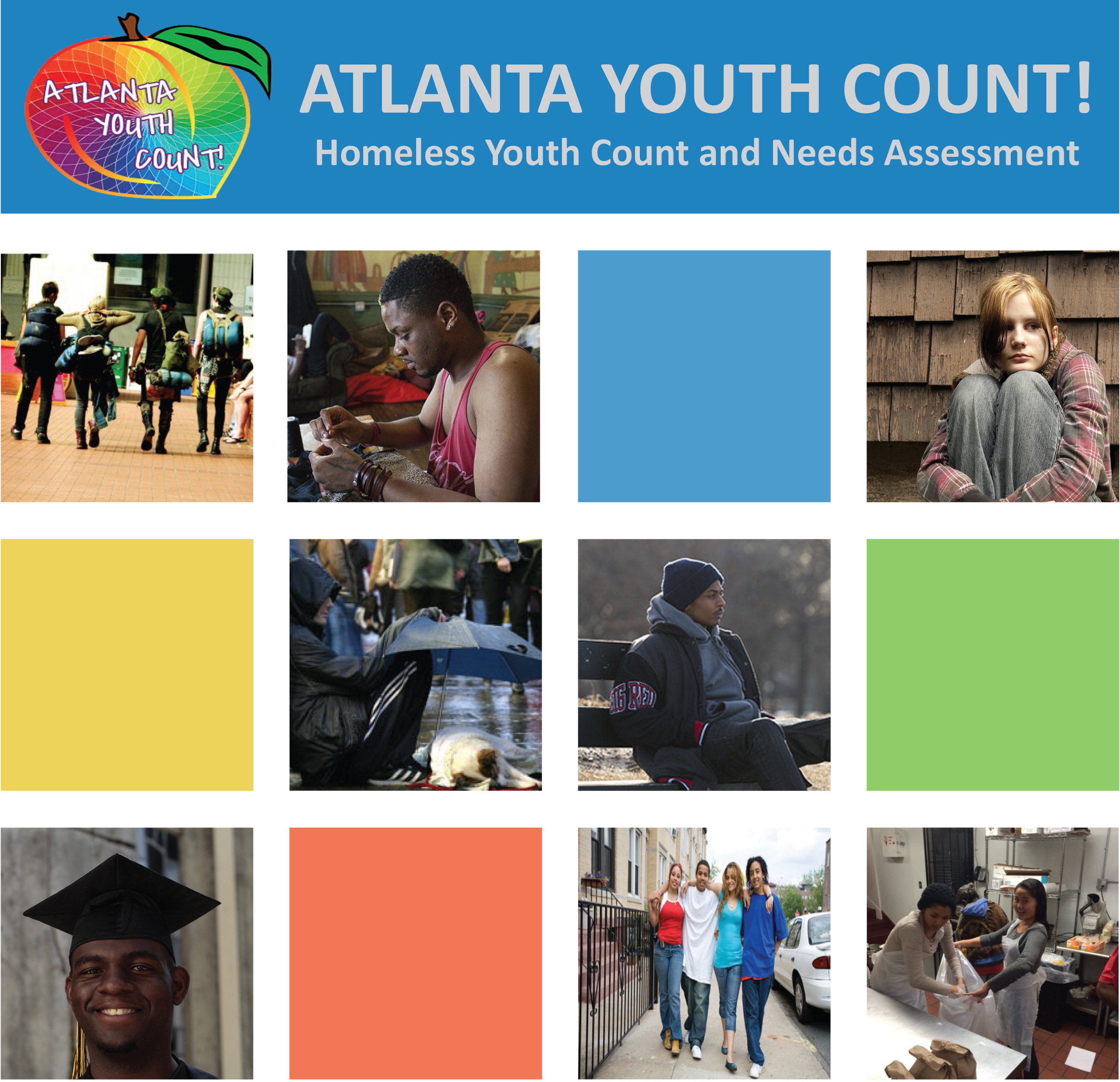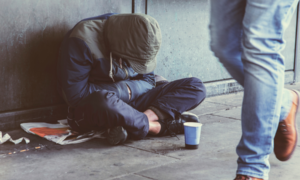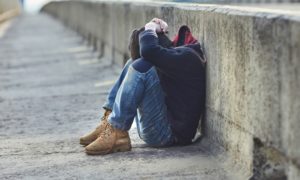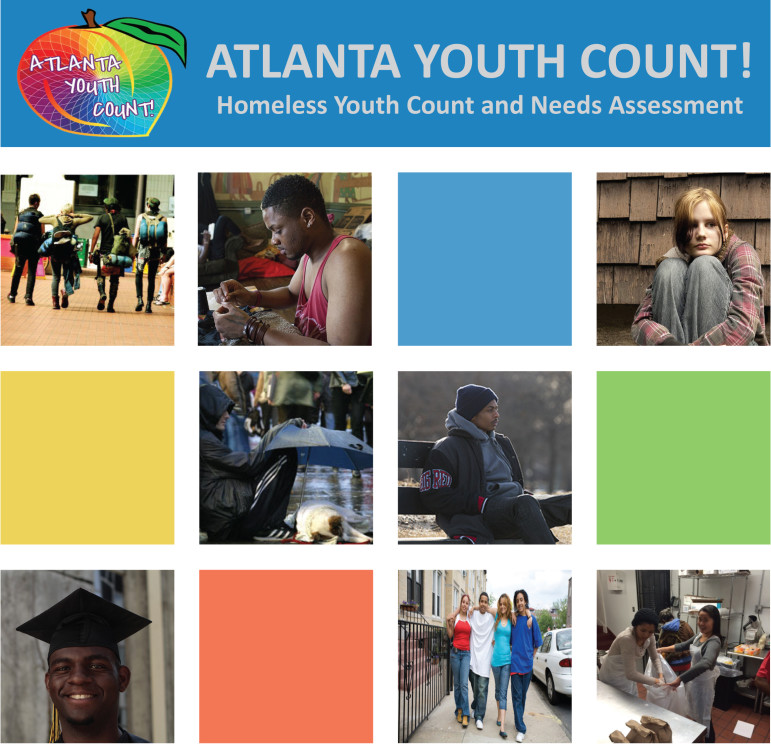
Young people experiencing homelessness in and around Atlanta are more numerous, more connected and more hopeful than previously believed. They band together to look after each other. Many of them work or go to school. But they also engage in a lot of high-risk behavior that leaves them “exceptionally vulnerable,” and bounce in and out of a social-service network that’s fragmented among the city and its suburbs.
Those are among the findings of a yearlong effort to count the number of homeless young people in the ninth-largest U.S. metro area. The study found a population of nearly 3,400 people between ages 14 and 25 — a figure “considerably larger” than the 2,000 to 2,400 of earlier estimates, said Eric Wright, the Georgia State University sociology professor who led the project.
“More than once we were all brought to tears talking with some of the youth about their stories,” Wright said. “This was a profound experience, emotionally as well as intellectually, for all of us who were involved at every level.”
Previous efforts to document the number of homeless youth have been conducted on a single night. For this count, more than 100 students from GSU, Morehouse College and Emory University, along with volunteers from homeless outreach organizations, fanned out for three months in the spring and summer of 2015.
[Related: Counting the Homeless Kids in Atlanta]
About 70 percent of the homeless youth surveyed were African-American. About 28 percent were gay, lesbian, bisexual or transgender. A quarter said they had been kicked out of their homes, while 46 percent found themselves on the streets because of lack of money.
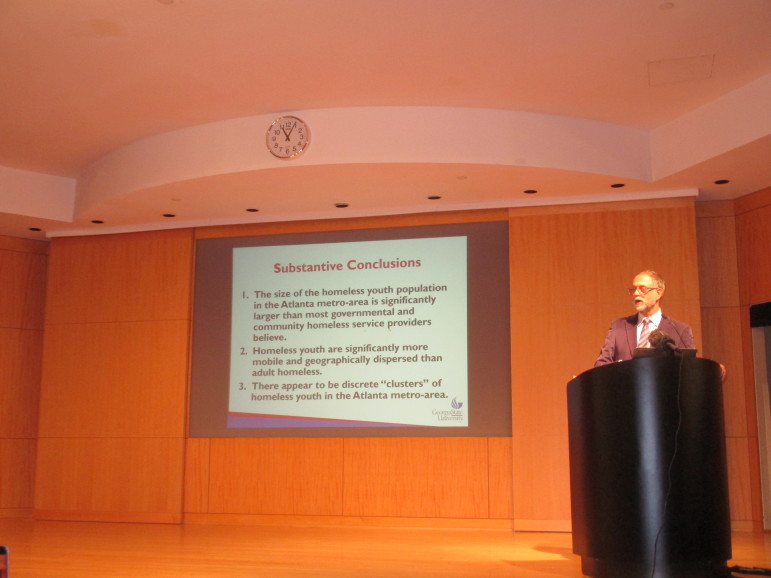
Photo by Matt Smith
Eric Wright, 2nd Century Initiative (2CI) professor of sociology and public health at Georgia State University, led the count and report on youth who are homeless in Atlanta.
About 49 percent said they had been sexually abused or been involved in the sex trade. Most reported using alcohol or marijuana, and 28 percent reported symptoms that suggested they were suffering from a serious mental illness.
But nearly one-third said they were still in school. More than 88 percent said they had been tested for HIV, while fewer than 2 percent said they had tested positive for the virus that causes AIDS.
More than 46 percent said they had jobs, and two-thirds “demonstrated remarkable resilience and hope,” the study found.
“They’re dreamers and despite their difficult circumstances, they really were very optimistic,” Wright said. “They have big ideas and big dreams. They were interested in big careers, independent success.” About 10 percent said they came to Atlanta to get into the city’s thriving music business — and many “are still hopeful that it might work out,” he said.
They’re also more connected than homeless adults.
“We heard the terms ‘my street family’ or ‘my squad’ quite a bit, which is an interesting thing,” Wright said. “Especially among the younger youth, the 14- to 17-year olds, they often moved around the city in small groups of three to five. This was a finding we did not expect.”
But their mobility also means leaders of a sprawling metropolitan hub like Atlanta need to view the problem as a metro-area-wide issue, Wright said.
“It’s clear this is a population that is here to stay,” Wright said. “They come to Atlanta because there’s a perception that services are much more available here in Atlanta than there are anywhere in the South.”
That’s troubling for people like Rick Westbrook, executive director of the Atlanta homeless outreach group Lost-n-Found Youth. He said the study points to much larger numbers of LGBT kids on the streets than previously believed, “and that’s concerning.”
“As soon as I saw those numbers and crunched them, I realized that we need to rethink some stuff, because there’s more of our kids out there than we thought,” said Westbrook, whose organization focuses on LGBT youth.
Currently, there are about 145 beds available in Atlanta for homeless youth, including six — soon to be 18 — at Lost-n-Found, Westbrook said. The GSU count indicates there are more than 950 homeless LGBT teens or young adults alone.
“We need more studies like this, so that we can wrap our head around it,” he said. “Because we’ve got a real problem.”


